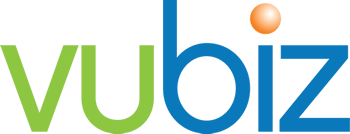 |
Written by Liz McDermott |
Navigating the intricate world of compliance training can be challenging, but selecting the right Learning Management System (LMS) tailored for compliance courses can simplify this process significantly. A compliance LMS is purposely designed to help organizations adhere to their regulatory training requirements efficiently. By choosing a system that easily delivers training sessions, tracks progress, and compiles reports, businesses can focus on the essentials of compliance training, making everything else secondary. Streamlining compliance training management as a priority ensures that organizations remain on the right side of legal and regulatory standards.
As you search for the right software, it's crucial to understand the distinct features needed for compliance training. The right LMS can significantly improve your organization's compliance training needs by emphasizing ease of use and efficiency in delivering and monitoring compliance training. This article will guide you through the essential steps in selecting an LMS for compliance courses, focusing on key features, budget considerations, and the value of outstanding support and user experience.

Understanding Compliance Training Needs
Before selecting an LMS for compliance, it's essential to understand your organization's specific training needs. This understanding forms the foundation of a successful software purchase. Here's a structured approach to identifying these needs:
Define Goals and Objectives:
- Start by outlining your goal with a new system to elevate your compliance training program. The criteria could range from ensuring all employees receive consistent and up-to-date training on the latest regulations to automating notifications and integrating the system into other platforms.
Identify Your Audience:
- Gather data on learner demographics, including ages, cultural backgrounds, preferences, languages, skill levels, and learning styles. This step ensures that the LMS can deliver content to different audiences and is accessible and easy to use for everyone.
Assess Current Training Resources:
- Perform a gap analysis to understand your existing resources, what’s working, and what needs improvement by evaluating existing compliance training materials and methods.
Remember, the goal is to keep things simple by selecting an LMS that effectively delivers training, tracks progress, and generates reports easily. Everything else is secondary but can enhance the overall training experience if it aligns with your identified needs.
Key Features to Look for in a Compliance LMS
Selecting an LMS for compliance courses involves focusing on simplicity while ensuring the software is equipped with essential features to deliver training effectively, track progress, and generate reports for your organization to be audit-ready. Here are the key features to prioritize:
Core Functionalities:
- SCORM Compliance: Ensures compatibility with industry standards for course content.
- Automated Tracking and Reporting: Facilitates easy monitoring of employee progress and completion of compliance-related courses.
- Certification and Recertification Management: Tracks and manages recurring certifications essential for annual required training and refreshers.
User Experience and Accessibility:
- Responsive Design: Guarantees that the LMS is accessible on various devices, including mobile, providing a seamless learning experience.
- Single Sign-On (SSO): Simplifies LMS access, reducing IT department workload and increasing adoption rates.
- Modern User Interface: Offers an intuitive and engaging interface that encourages learners to complete their training on time.
Integration and Customization:
- Integration with Existing Systems: Ensures the LMS works seamlessly with the business's current tech stack.
- Customizable Learning Paths: Allows tailored training activities to meet specific needs, automating enrollments and course assignments.
By focusing on these key features, organizations can select an LMS that simplifies the delivery and management of compliance training and enhances employees' overall learning experience.
Evaluating LMS Providers
Evaluating LMS providers is critical in selecting the right compliance training software. Here's a structured approach to ensure you make an informed decision:
Vendor Evaluation and Selection:
- Research and List Potential Vendors: Create a list of potential LMS providers by searching for vendors on software review websites like G2, Capterra, and TrustRadius.
- Assess Key Features: Prioritize core functionalities like SCORM compliance, automated tracking, and certification management. Also, user experience aspects such as responsive design and single sign-on capabilities should be considered.
- Technical and Support Capabilities: Evaluate each vendor's technical prowess, flexibility, and support services. Ensure they guarantee uptime and provide configuration options like dashboard customization, multi-language, and robust data security measures.
Comprehensive LMS Evaluation:
- Organizational Match: Understand your organizational needs and how they align with the software provider’s strengths and customer success stories.
- Product Viability: Investigate the LMS's roadmap, update frequency, and how customer feedback influences product development.
- Vendor Profile and Reputation: Research the vendor's reputation to gauge reliability and customer satisfaction.
Remember, the goal is to keep things simple by choosing an LMS that effectively delivers training, tracks progress, and generates reports efficiently. Everything else, while beneficial, is secondary.
Budget Considerations and Cost-Effectiveness
When approaching the budget considerations and cost-effectiveness of selecting an LMS for compliance courses, balancing affordability and the features that meet your organization's needs is essential. Here are key points to consider:
Cost Structure and Pricing Models:
- Understand various pricing models, such as licensing fees, per-user fees, or time-based usage rates, and choose the best option for your organization.
- Be mindful of up-front costs, like the initial purchase, installation, setup, and staff training.
- Factor in ongoing expenses like annual licensing fees, bandwidth usage, API calls, and potential additional users or training content costs.
Hidden Fees and Total Cost of Ownership:
- Include potential hidden fees in your budget to avoid surprises.
- Consider alternative costs such as integrations, add-ons, and the number of admin users to gauge the total cost of ownership.
By carefully evaluating these aspects, you can select an LMS that fits your budget and provides the necessary support and scalability for your compliance training programs, keeping in line with the principle of simplicity and efficiency.
User Experience and Accessibility
In selecting an LMS for compliance courses, prioritizing user experience and accessibility is not just about inclusivity; it's about ensuring simplicity and effectiveness in delivering training, tracking progress, and running reports. Here's how to ensure your LMS meets these critical needs:
Accessibility Compliance:
- Adherence to laws like the ADA and Section 508 is crucial.
- Look for a VPAT or similar statement for compliance assurance.
- Ensure the LMS conforms to WCAG at least at level AA for broader accessibility.
Enhancing User Experience:
- The LMS should offer a positive experience for all users, accommodating diverse abilities and preferences.
- Features such as adjustable appearance, clear feedback, and multiple interaction methods enhance usability.
- Testing with real users, including those with disabilities, ensures the LMS meets diverse needs effectively.
By focusing on these aspects, you can choose an LMS that simplifies compliance training while being accessible and engaging for all users.
Implementation and Ongoing Support
Implementing an LMS for compliance courses should focus on simplicity and effectiveness, ensuring that your chosen solution efficiently delivers training, tracks progress, and generates comprehensive reports. Keeping this in mind, here are the steps and considerations for a smooth implementation and ongoing support:
Preparation and Customization:
- Assess the unique needs of your workforce, including the devices they will use and how the LMS can adapt to company and industry changes over time.
- Utilize a dedicated internal team for the LMS implementation process, focusing on customization, testing, access settings, and integration with external tools.
- Ensure enhanced security features are in place for industries requiring strict compliance and data protection.
Testing and Adjustment:
- Conduct pre-implementation tests to ensure the LMS meets your requirements, making adjustments based on employee feedback and usage to promote long-term success.
Training and Ongoing Support:
- Define clear timelines, tasks, and responsibilities for team members involved in the implementation and training phases to ensure a smooth transition.
- Establish an ongoing evaluation and optimization regimen, gathering regular user feedback to assess and enhance LMS performance.
- Ensure your LMS provider offers detailed training and constant support, including resources such as knowledge bases, instructional videos, and live support options.
By focusing on these critical areas, you can ensure that your LMS for compliance meets the immediate training needs, supports your organization's long-term goals, and adapts to future requirements.
Conclusion
In the quest for effective compliance training, the essence of simplicity cannot be overstated. The foundation of selecting an LMS hinges on finding software that adeptly delivers training, monitors progress, and generates reports with ease, ensuring that businesses can focus on what matters most - compliance and training efficiency. This streamlined approach meets the immediate needs of regulatory training and sets the stage for a focused, impactful learning experience. Keeping training straightforward, accessible, and engaging ensures organizations comply with regulations and foster continuous improvement and learning.
By prioritizing systems that are easy to implement, navigate, and report on, businesses can adapt rapidly to changing compliance landscapes without losing stride. For those seeking to explore adaptable and efficient LMS solutions, learn more about Vubiz LMS solutions, which ensure your compliance training remains streamlined and impactful.
